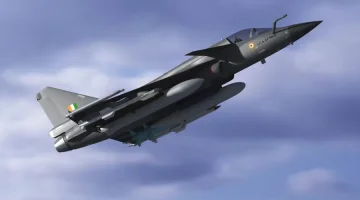- Views: 5K
- Replies: 40

India's Light Combat Aircraft (LCA) Tejas continues to evolve, with the recent Mk1A variant unveiling a significant upgrade to its air intake system. This crucial modification promises to enhance the aircraft's performance characteristics, especially during crucial phases like takeoff and landing.
The Challenge and the Solution
The engineering team behind the Tejas focused on improving pressure recovery in the Mk1A's air intake. This means ensuring the engine receives the optimal amount of air, especially at low speeds.To achieve this, they replaced the older single-door Auxiliary Air Intake Door (AAID) with a new 3-door design. Additionally, they carefully optimized the shape of the intake itself (known as the cowl).
Details of the Redesign
Initial attempts to improve performance focused on adjusting the shape of the 3-door system's openings and its ability to change the amount of air entering.While this yielded some positive results at low speeds, it was also causing problems at high speeds. This is due to something called spillage drag, where extra air bypassing the engine creates unwanted resistance.
The breakthrough came from optimizing the cowl geometry to better manage airflow near the engine inlet. This, combined with the refined 3-door AAID, is expected to significantly increase pressure recovery.
The Benefit
The net result of these design changes is a predicted 3% improvement in pressure recovery within the air intake. This translates directly into increased engine efficiency, ultimately giving the LCA Tejas Mk1A a tangible performance boost.Conclusion
The upgraded air intake system, initially seen on LCA Navy Mk1 prototypes, represents a key step in the Tejas program. It demonstrates a continued commitment to refining the aircraft's design.These improvements contribute to solidifying the LCA Tejas as a capable and versatile fighter within India's defense forces.

